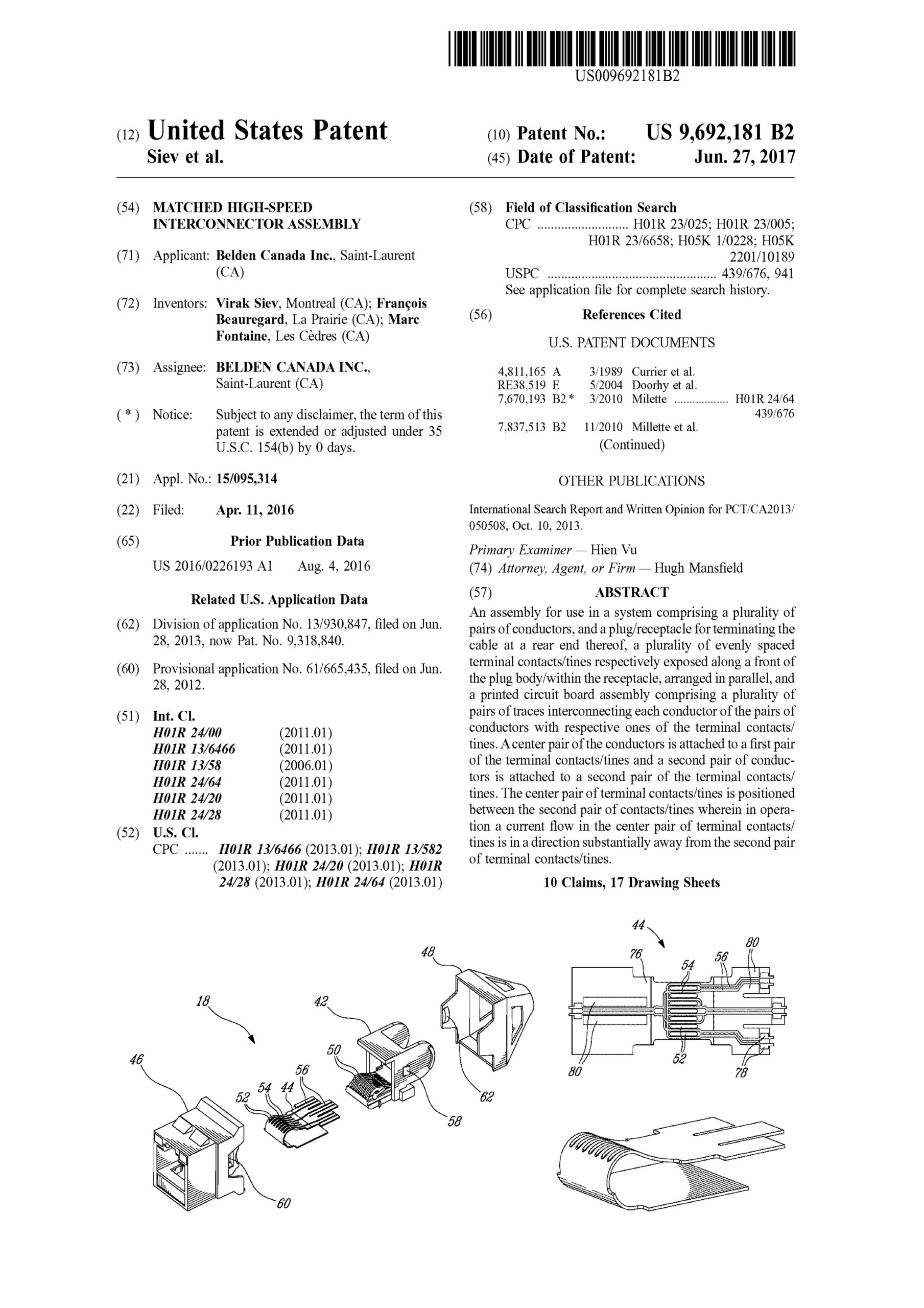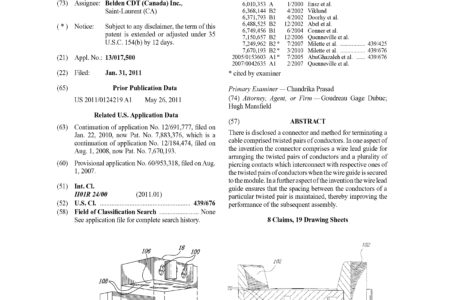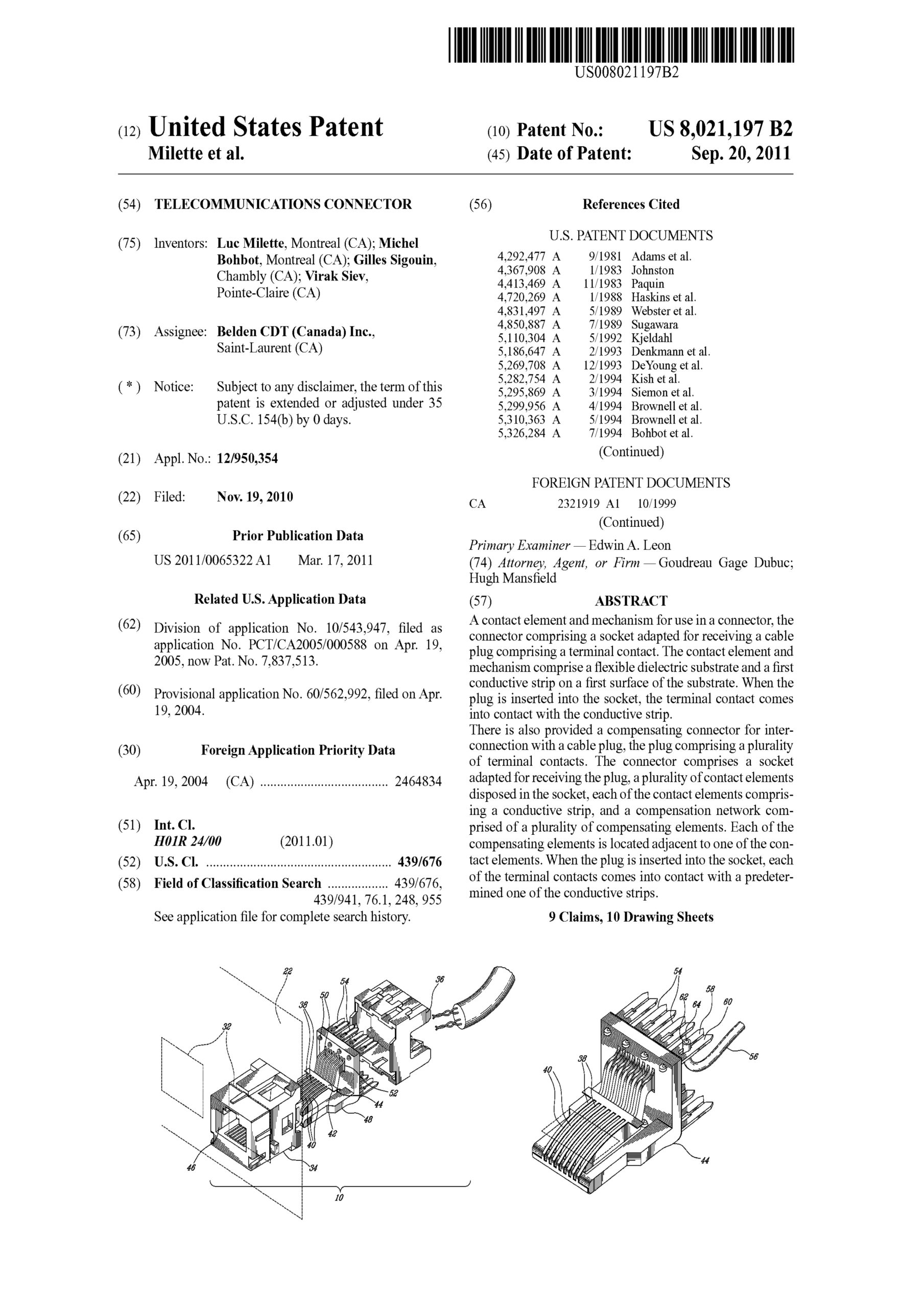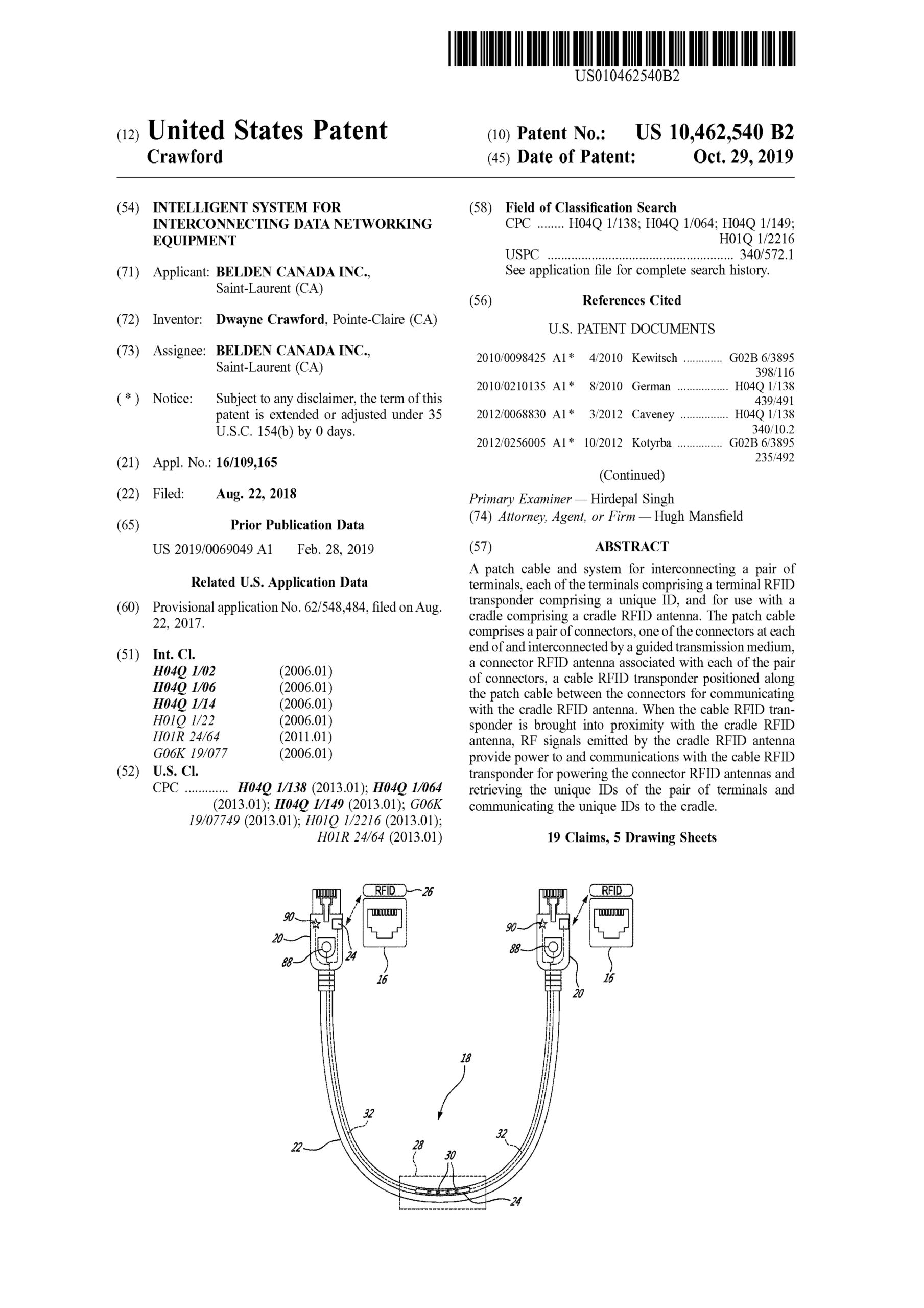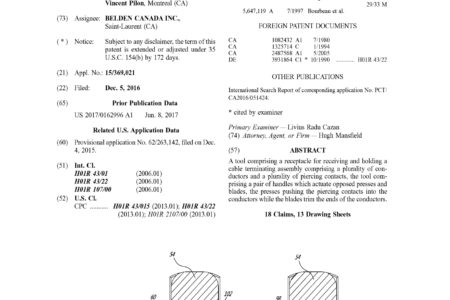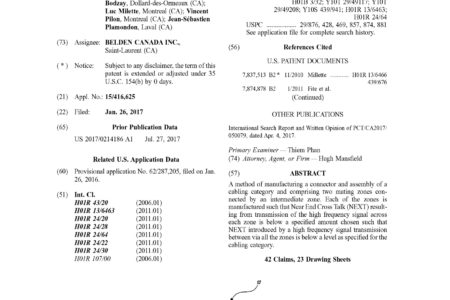Matched high-speed interconnector assembly
An assembly for use in a system comprising a plurality of pairs of conductors, and a plug/receptacle for terminating the cable at a rear end thereof, a plurality of evenly spaced terminal contacts/tines respectively exposed along a front of the plug body/within the receptacle, arranged in parallel, and a printed circuit board assembly comprising a plurality of pairs of traces interconnecting each conductor of the pairs of conductors with respective ones of the terminal contacts/tines. A center pair of the conductors is attached to a first pair of the terminal contacts/tines and a second pair of conductors is attached to a second pair of the terminal contacts/tines. The center pair of terminal contacts/tines is positioned between the second pair of contacts/tines wherein in operation a current flow in the center pair of terminal contacts/tines is in a direction substantially away from the second pair of terminal contacts/tines.
